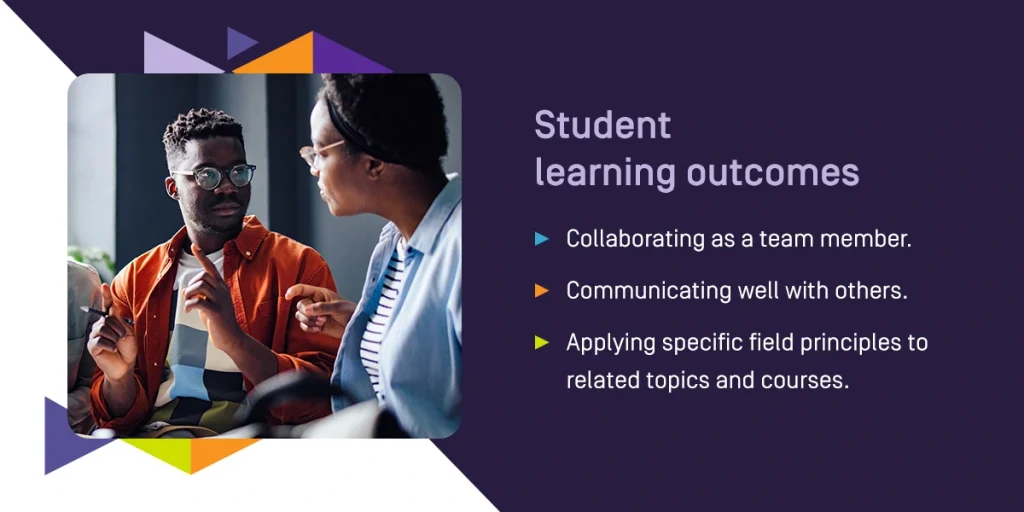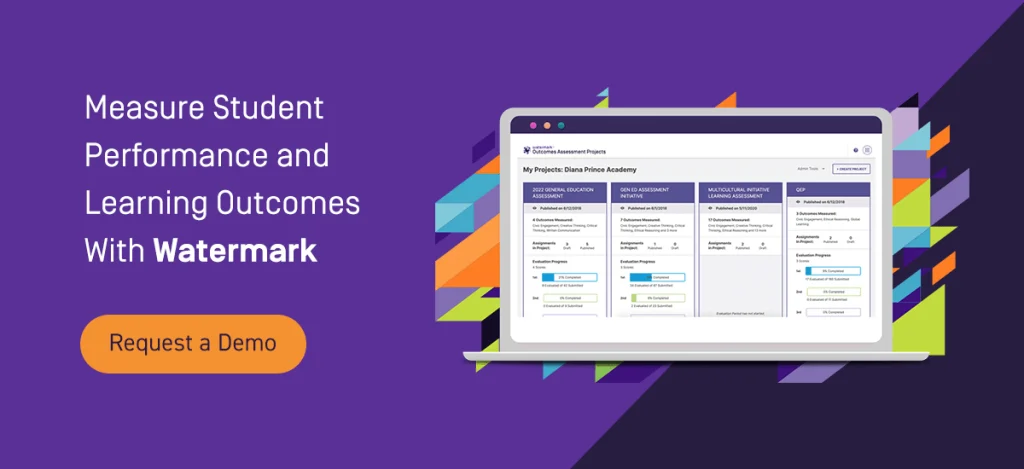
Student performance and learning outcomes are common terminology used in higher education institutions. Administrators working for colleges and universities can improve their operations by understanding the difference between the two terms and their importance.
Student Performance vs. Learning Outcomes
Student learning outcomes are the desired results your institution wants to see students take from programs and courses. Student outcomes are often more general, giving room for individual student strengths and professor interpretations. They might include various skills and traits that institutions want students to demonstrate in later courses, academic ventures, or the workforce. Some examples of student learning outcomes include:
- Collaborating as a team member.
- Communicating well with others.
- Applying specific field principles to related topics and courses.

The general nature of these skills allows students to develop their proficiency over time and apply skills in various ways. For example, some students might enhance their collaboration and communication skills through group projects, while others learn through their research experiences. Faculty and administrators can use student learning outcomes to highlight the diverse knowledge and opportunities students can gain from their programs and prepare them for after graduation. Overall, student outcomes describe what students will earn from receiving an education with your institution.
Alternatively, student performance reflects how students do academically, ethically, and socially at your institution. You can measure these with student performance indicators, which can help institutions indicate how well students are doing in programs and courses. These performance indicators are more specific, allowing institutions to measure progress and standards. Some examples of student performance indicators include the following:
- Grade point average and course grades.
- Attendance records.
- Research and internships.
While your student learning outcomes are more abstract and conceptual, your student performance will help institutions understand their student population and reflect their work. However, student performance can also reflect through demonstrated abilities, like the student’s capability to apply and explain various concepts and knowledge they learned in programs and courses. These performance indications might be reflected in their test or essay scores.
The Difference Between Student Performance and Student Learning Outcomes
The main difference between the two metrics is the depth of information they provide. Student performance provides a snapshot of current student knowledge and skills, while learning objectives show more long-term learning and performance. Student performance might indicate that students can pass their individual courses; learning objectives demonstrate that students have the essential factors to graduate from their college and institution.
Further, learning objectives support students throughout ventures related to their program. Whether students pursue research, graduate programs, internships, jobs, or volunteer opportunities, their ability to meet the learning objectives means they have the knowledge and skills needed to thrive outside of their institution.
Why Is Measuring Student Performance and Student Learning Outcomes Important?
Student performance and learning outcomes metrics can supply institutions and administrators with crucial information they need to drive new policies and initiatives while providing the best education for their students. The benefits of measuring learning outcomes and student performance include:
- Unifying program and college objectives.
- Directing improvement initiatives.
- Identifying at-risk students.
- Measuring institutionalized improvement and growth.
- Highlighting program benefits to students, employers, and other institutions.
With many data applications, your administration can implement stronger decisions that support student needs and program goals.
Measure Student Performance and Learning Outcomes With Watermark

When your institution wants to unlock the power of student performance and learning outcomes metrics, you need the right data collection and management solutions.
Watermark Outcomes Assessment Projects software solution allows schools to create custom rubrics to track how well programs meet learning outcomes. For more comprehensive and robust assessments, you can pair this with Watermark Learning & Licensure, which shows the student side of learning objectives. Student accomplishments upload into the solution to provide an overview of their courses, research, internships, and more. Watermark Student Success & Engagement highlights student performance by collecting information on grades and attendance to identify and help at-risk students.
Request a demo today and discover how Watermark can streamline your institution’s data tracking and management.















































































































































































































































































































































































































